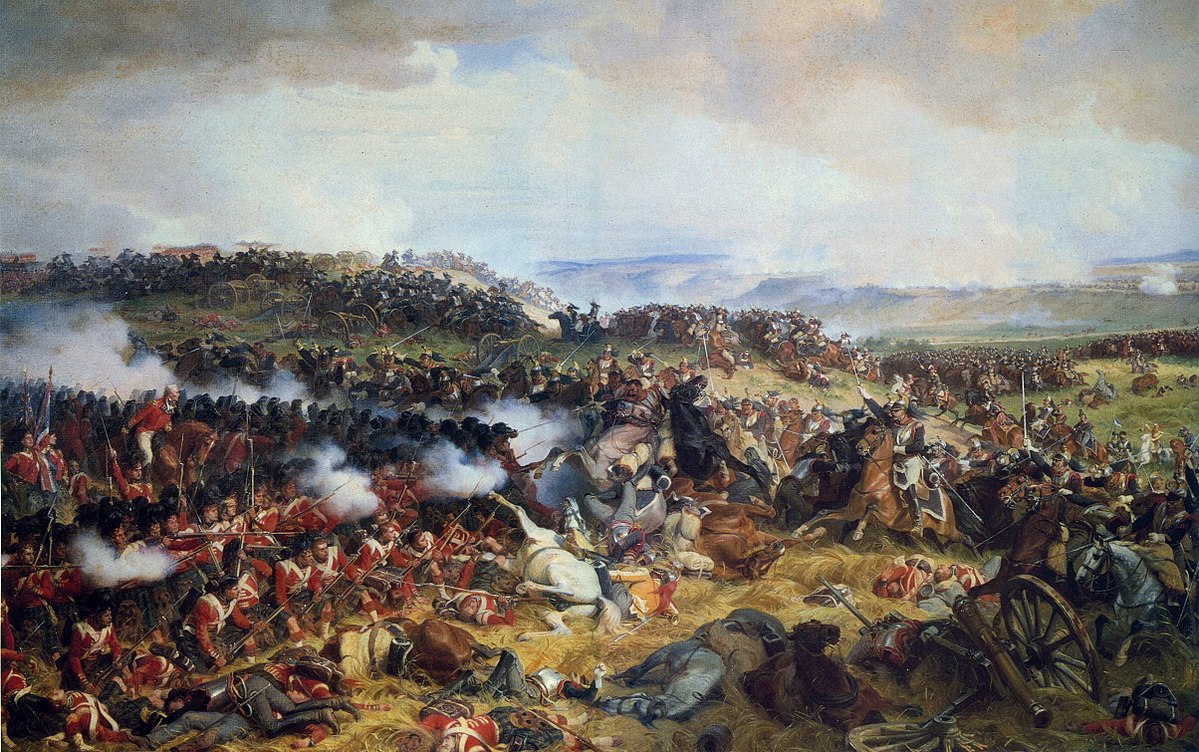
French Cavalry Attack
Monument Gordon (1815 battle),A little before 16:00, Ney noted an apparent exodus from Wellington's centre. He mistook the movement of casualties to the rear for the beginnings of a retreat, and sought to exploit it. Following the defeat of d'Erlon's Corps, Ney had few infantry reserves left, as most of the infantry had been committed either to the futile Hougoumont attack or to the defence of the French right. Ney therefore tried to break Wellington's centre with cavalry alone. Initially, Milhaud's reserve cavalry corps of cuirassiers and Lefebvre-Desnoëttes' light cavalry division of the Imperial Guard, some 4,800 sabres, were committed. When these were repulsed, Kellermann's heavy cavalry corps and Guyot's heavy cavalry of the Guard were added to the massed assault, a total of around 9,000 cavalry in 67 squadrons. When Napoleon saw the charge he said it was an hour too soon.
Wellington's infantry responded by forming squares (hollow box-formations four ranks deep). Squares were much smaller than usually depicted in paintings of the battle—a 500-man battalion square would have been no more than 60 feet (18 m) in length on a side. Infantry squares that stood their ground were deadly to cavalry, as cavalry could not engage with soldiers behind a hedge of bayonets, but were themselves vulnerable to fire from the squares. Horses would not charge a square, nor could they be outflanked, but they were vulnerable to artillery or infantry. Wellington ordered his artillery crews to take shelter within the squares as the cavalry approached, and to return to their guns and resume fire as they retreated.
Witnesses in the British infantry recorded as many as 12 assaults, though this probably includes successive waves of the same general attack; the number of general assaults was undoubtedly far fewer. Kellermann, recognising the futility of the attacks, tried to reserve the elite carabinier brigade from joining in, but eventually Ney spotted them and insisted on their involvement.
